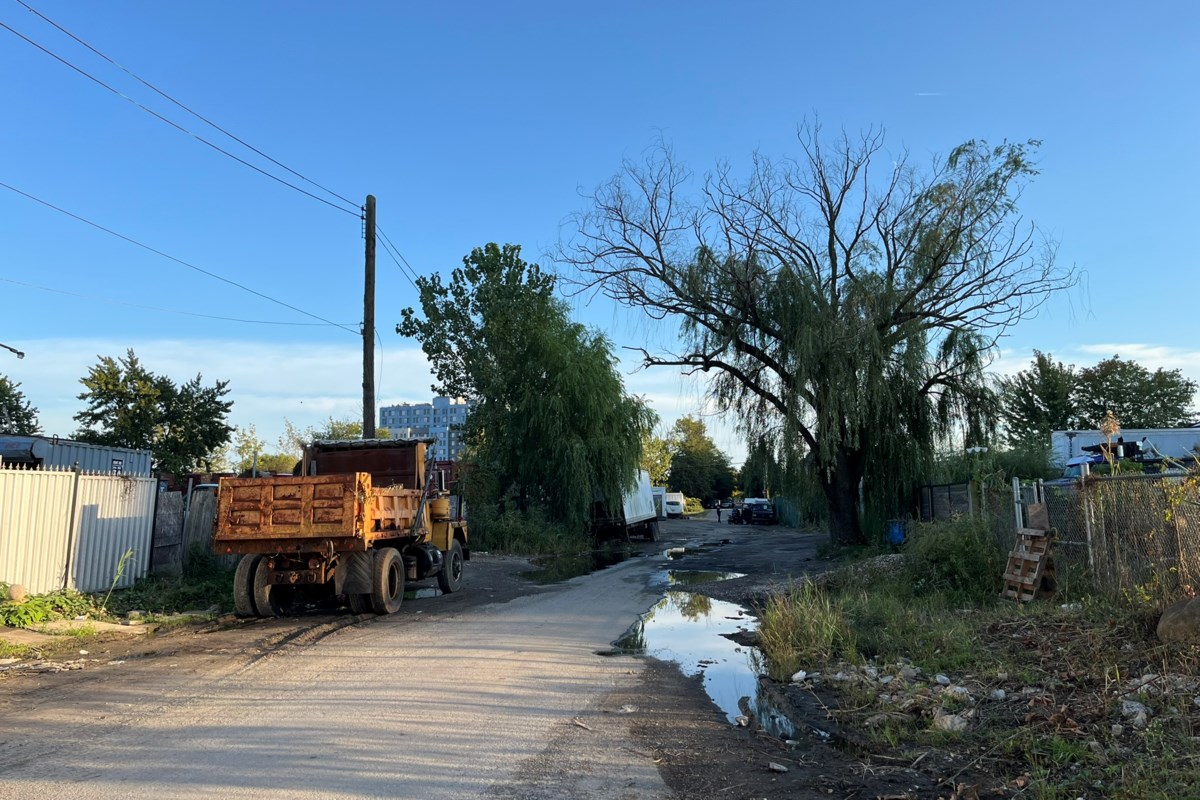A highlight of the city’s infrastructure plan in eastern Brooklyn is the ability for residents to opt to retrofit their home, or voluntary relocate through a buyout program.
The city on Tuesday unveiled a major neighborhood housing and infrastructure overhaul for the Jewel Street area on the border Brooklyn and Queens, which has been plagued with flooding and poor road conditions for decades.
The Jewel Streets Neighborhood Plan, which sprung from extensive community advocacy and two years of meetings, is anchored by the city’s $146 million investment in a new drainage system, as well as the creation of new bus lane and traffic safety improvements along Linden Boulevard.
Additionally, the city will transform 17 acres of city-owned land into 1,400 new homes and pursue an area-wide rezoning for the neighborhood to unlock another 3,600 homes.
A highlight of the plan is the ability for residents to opt to remain in their home and retrofit it to improve flood resilience, or voluntary relocate through a city-run Resilient Acquisitions buyout program. Jewel Streets residents can express interest in receiving this support by filling out a online form.
“For too long, the Jewel Streets neighborhood has suffered from chronic flooding, dangerous streets and a dire housing shortage,” Adams said. “When we came into office, we said the days of letting government ignore the Jewel Streets and leaving residents to fend for themselves were over, and today, with the release of this plan, we are again keeping our word.”
Because the Jewel Streets, which straddles 12 blocks across East New York in Brooklyn and Lindenwood in Queens, is a low-lying area without comprehensive stormwater and sanitary sewer infrastructure, residents experience year-round flooding. Nicknamed the “The Hole” due to its sunken streets, the city will now install a new drainage system to eliminate the use of septic systems.
The plan also includes the creation of a network of storm sewers to direct rainfall into newly-created bluebelts, or natural water features that store and filter rainwater before ultimately releasing the water into Spring Creek. There will also be bluebelt ponds with plantings and open space benefits, as well as reconstructed streets with sidewalks, street trees and safety improvements.

. Photo: Supplied/NYC Mayor’s Office
When the East New York Community Land Trust (ENYCLT) began organizing in the Jewel Streets four years ago, residents said they had tried raising their concerns with various government offices for decades to no avail.
“It is an understatement to say that they were frustrated and jaded, and many felt like giving up,” said Debra Ack, co-founder and board member of ENYCLT. “Nevertheless, residents were ready to try again so we formed the Justice for the Jewel Streets Coalition and organized relentlessly around collective demands for investment and infrastructure. Today, we are thrilled that the city has released this detailed plan to address flooding over the long term.”
The city will conduct a scoping hearing, the first public step in the environmental review process before the end of 2025, and a full Uniform Land Use Review Procedure (ULURP) will begin in 2026.
“For far too long, this community has gone without basic infrastructure, fending for themselves in the face of constant flooding, faulty septic systems and rampant illegal dumping,” said Meredith McNair, senior community planner, Cypress Hills Local Development Corporation, Inc. “Today, we move towards a more livable, resilient future for the neighborhood, complete with infrastructure upgrades, bluebelt ponds, affordable housing, and a voluntary buy-out and retrofit program for residents in flood-prone areas.”

